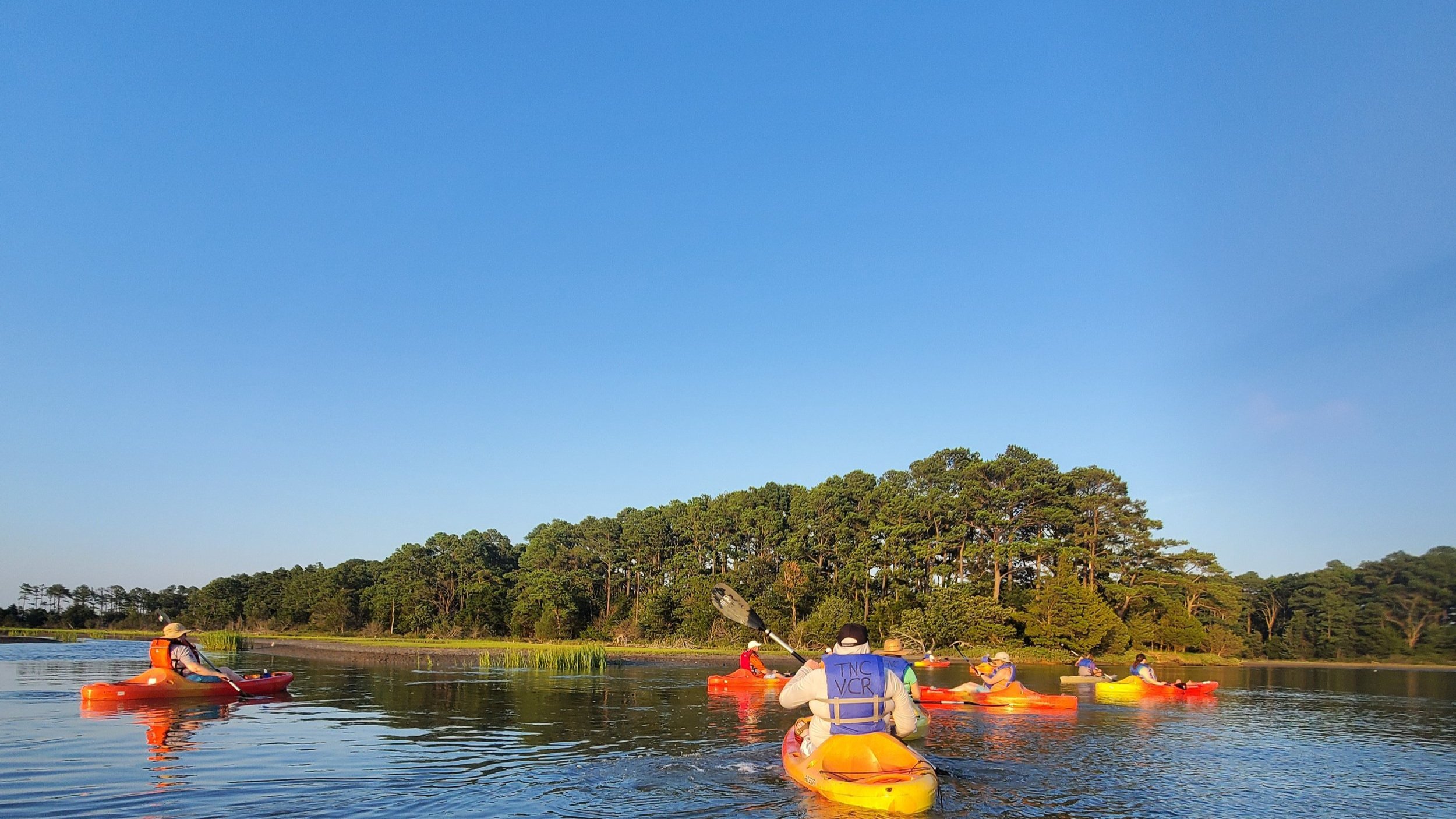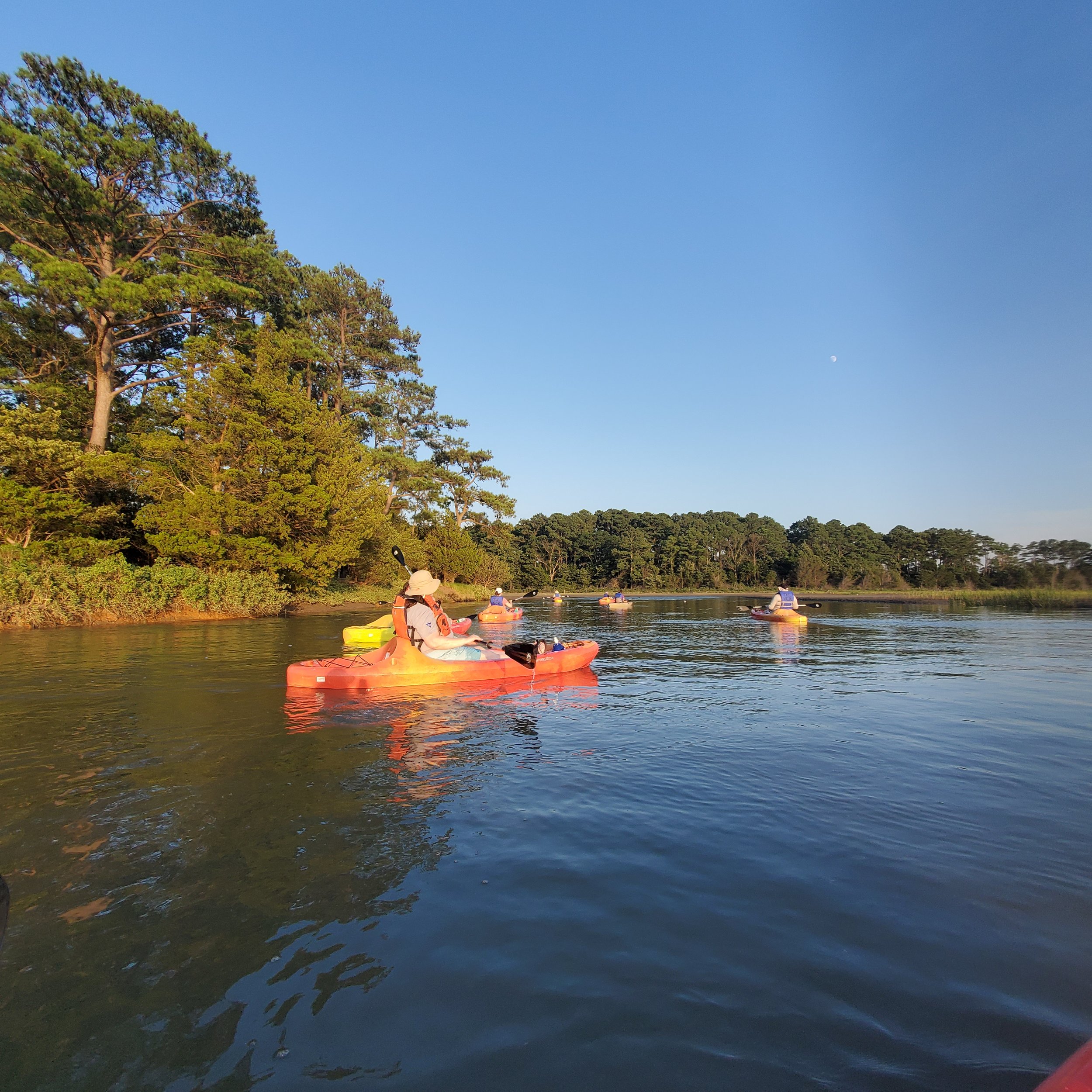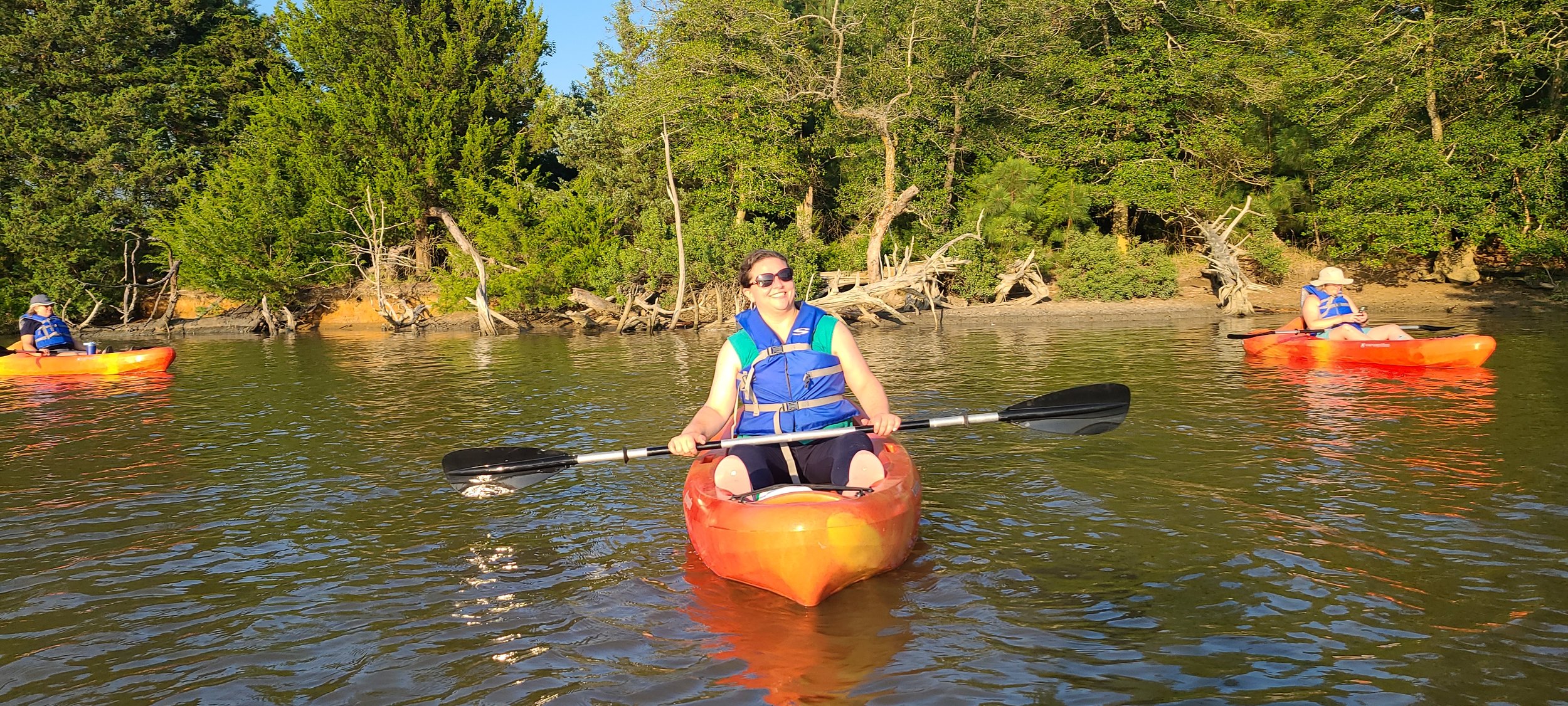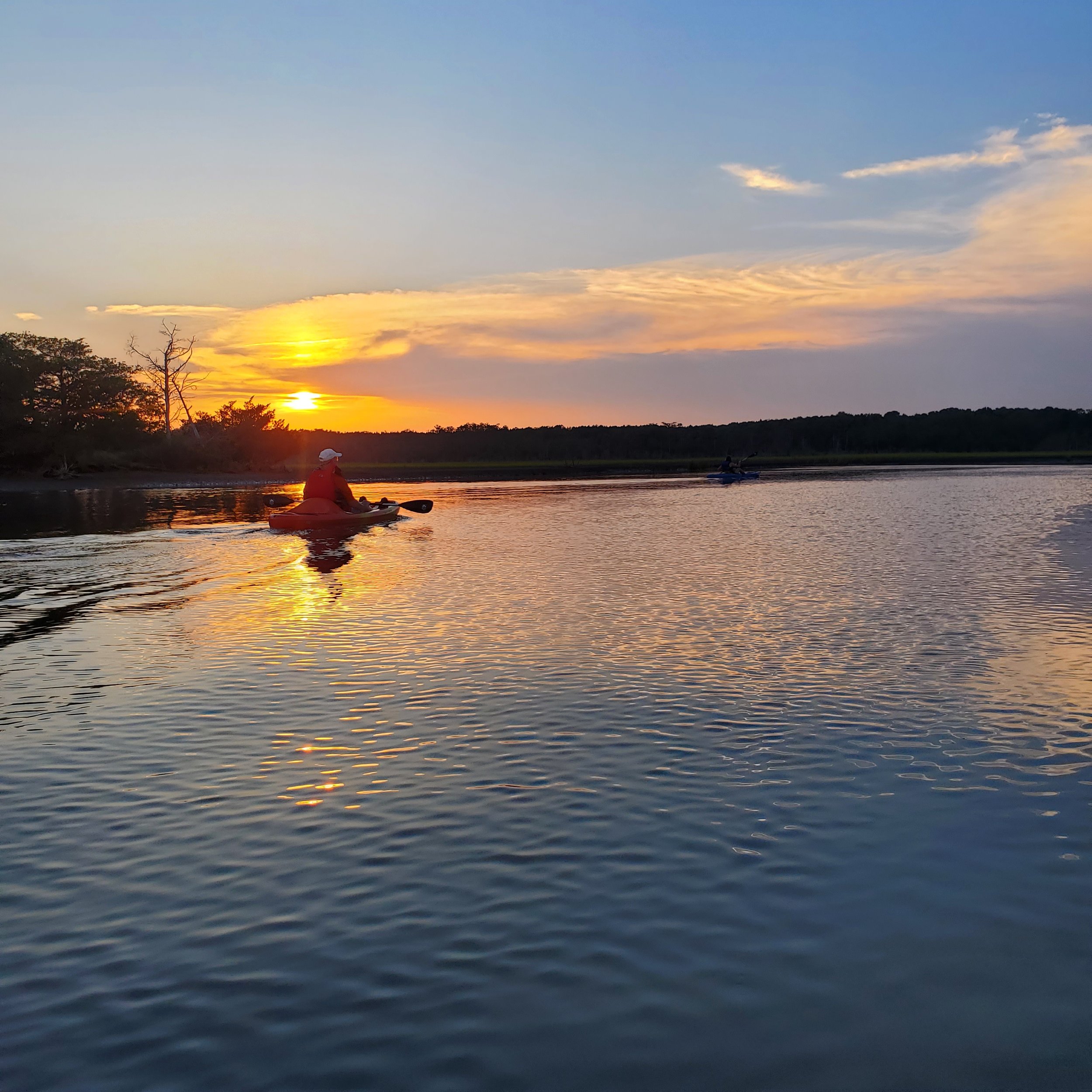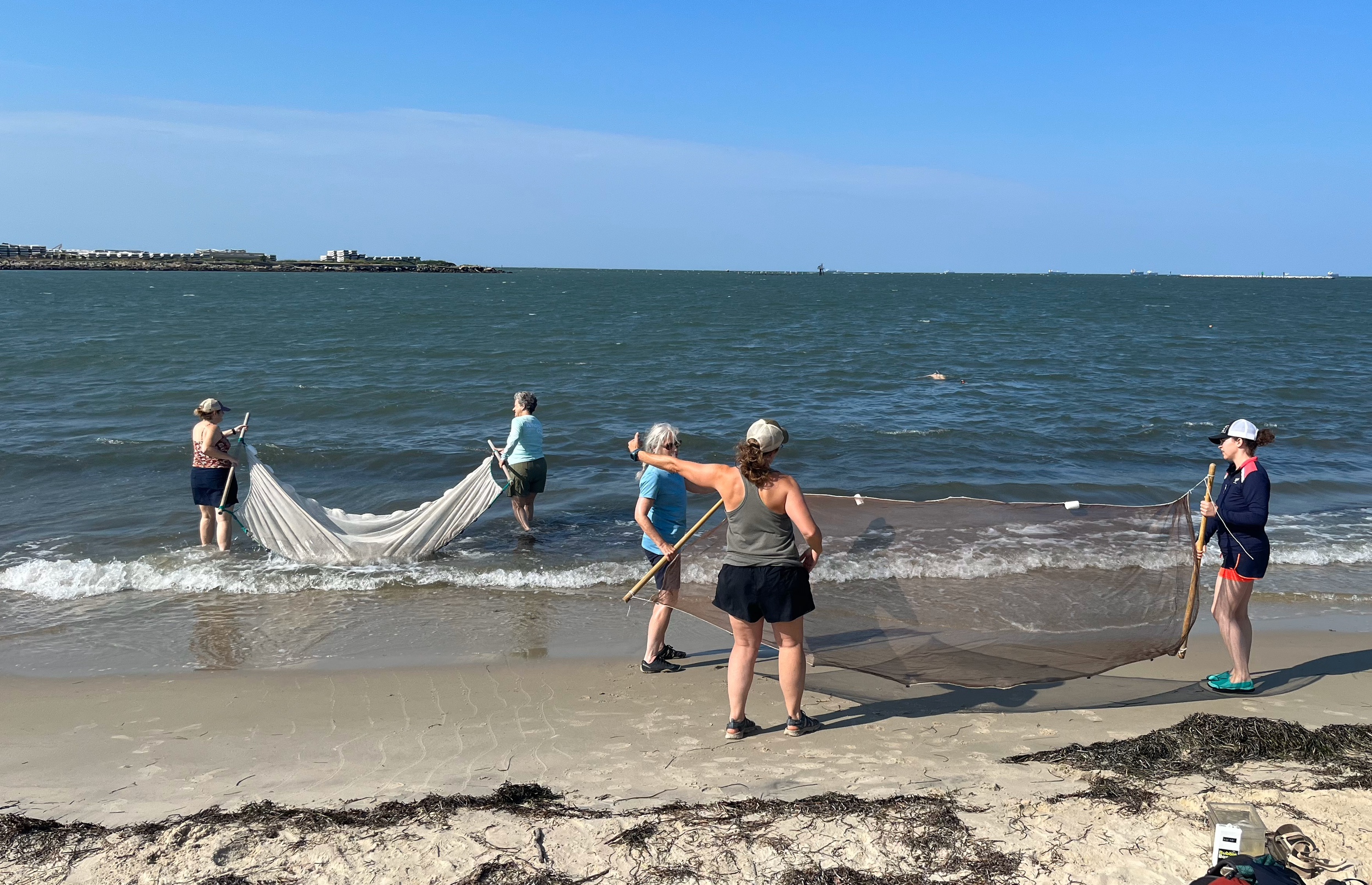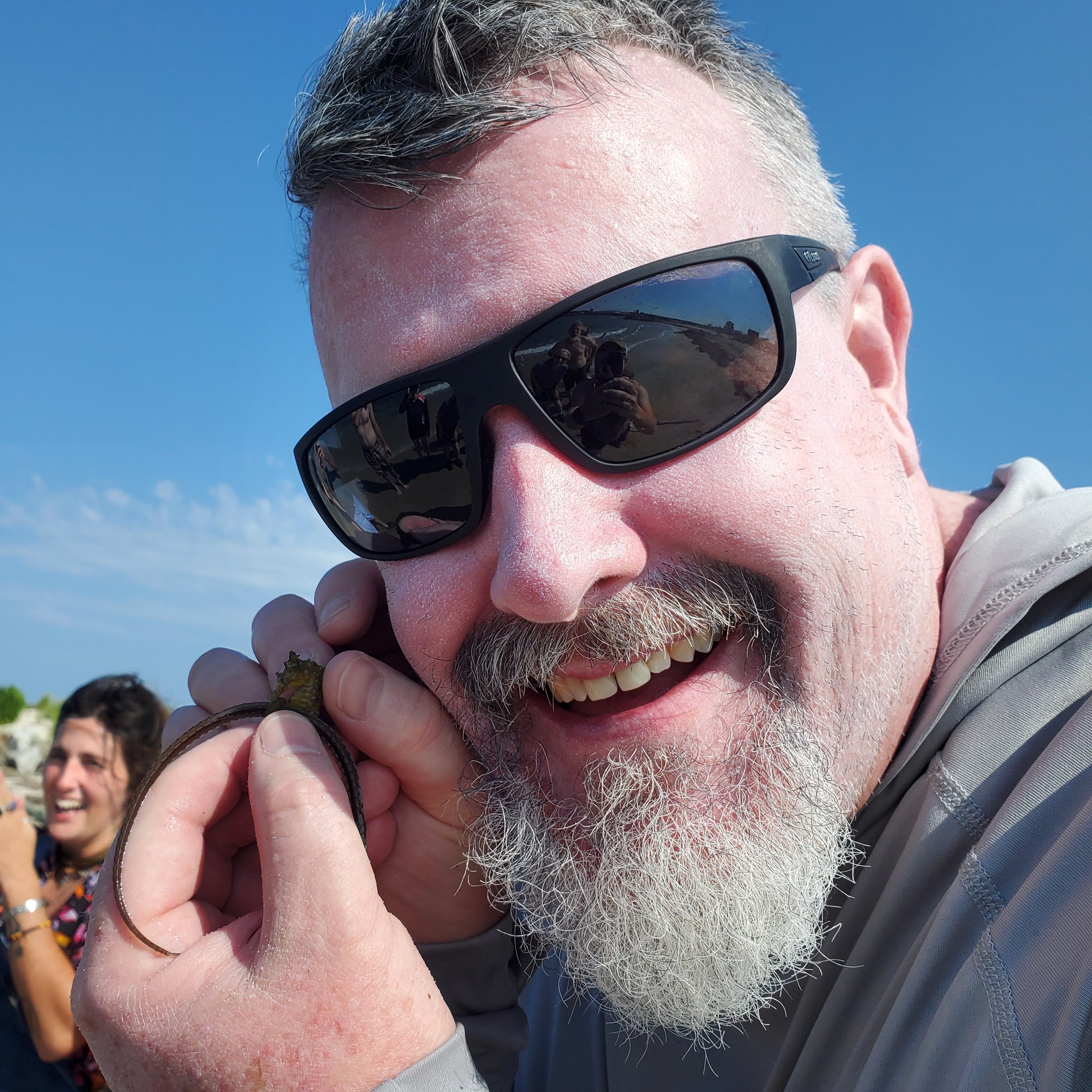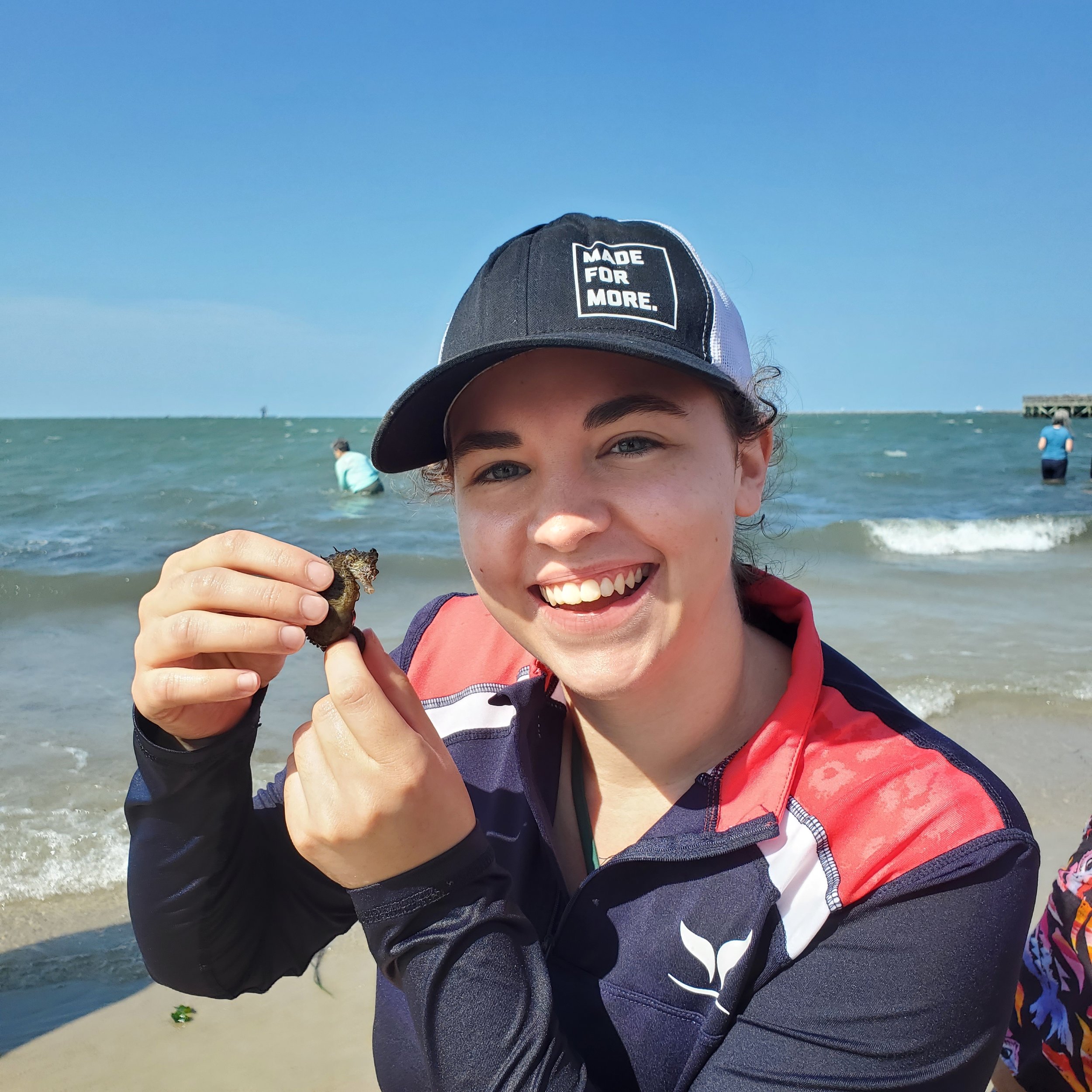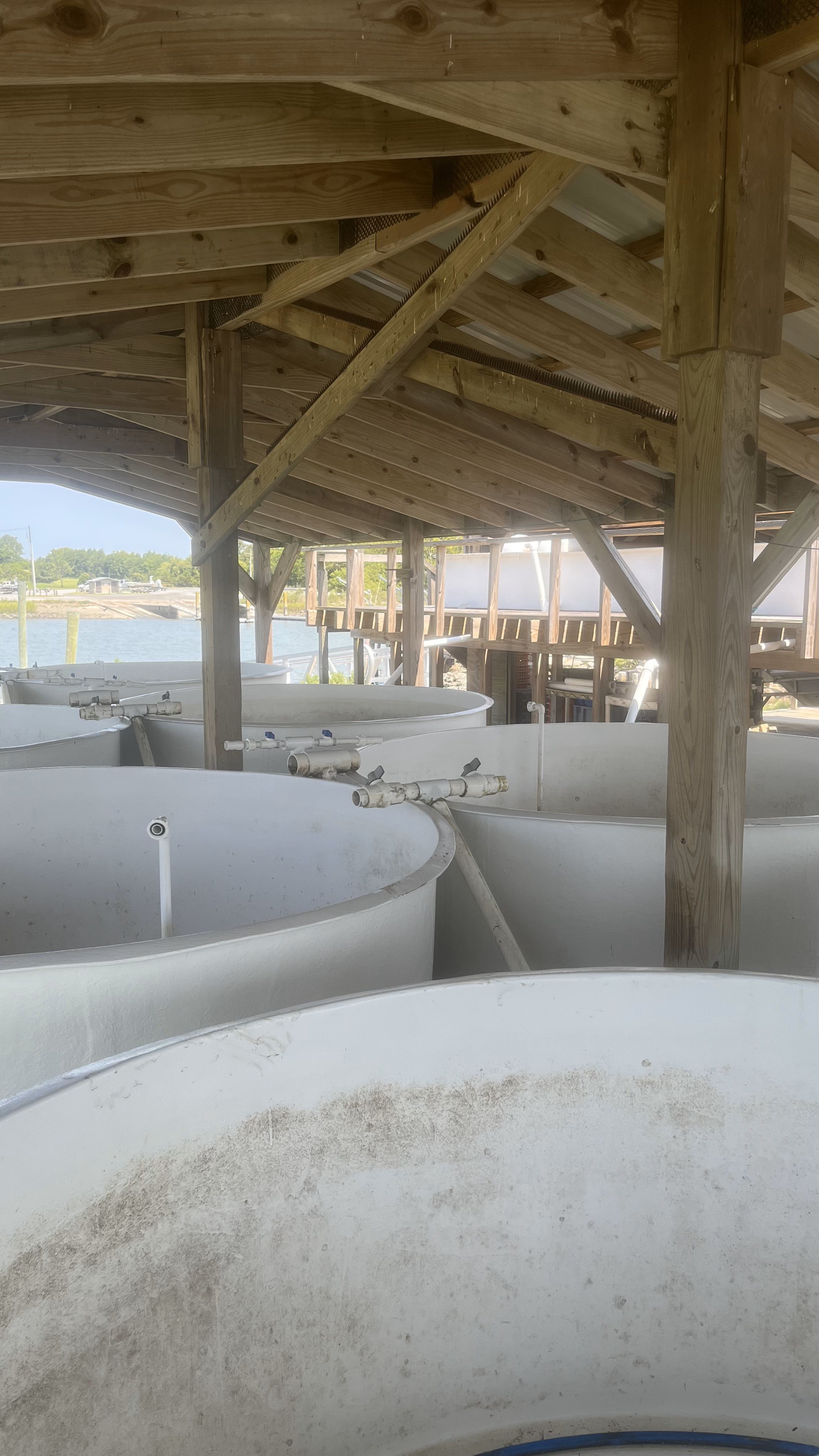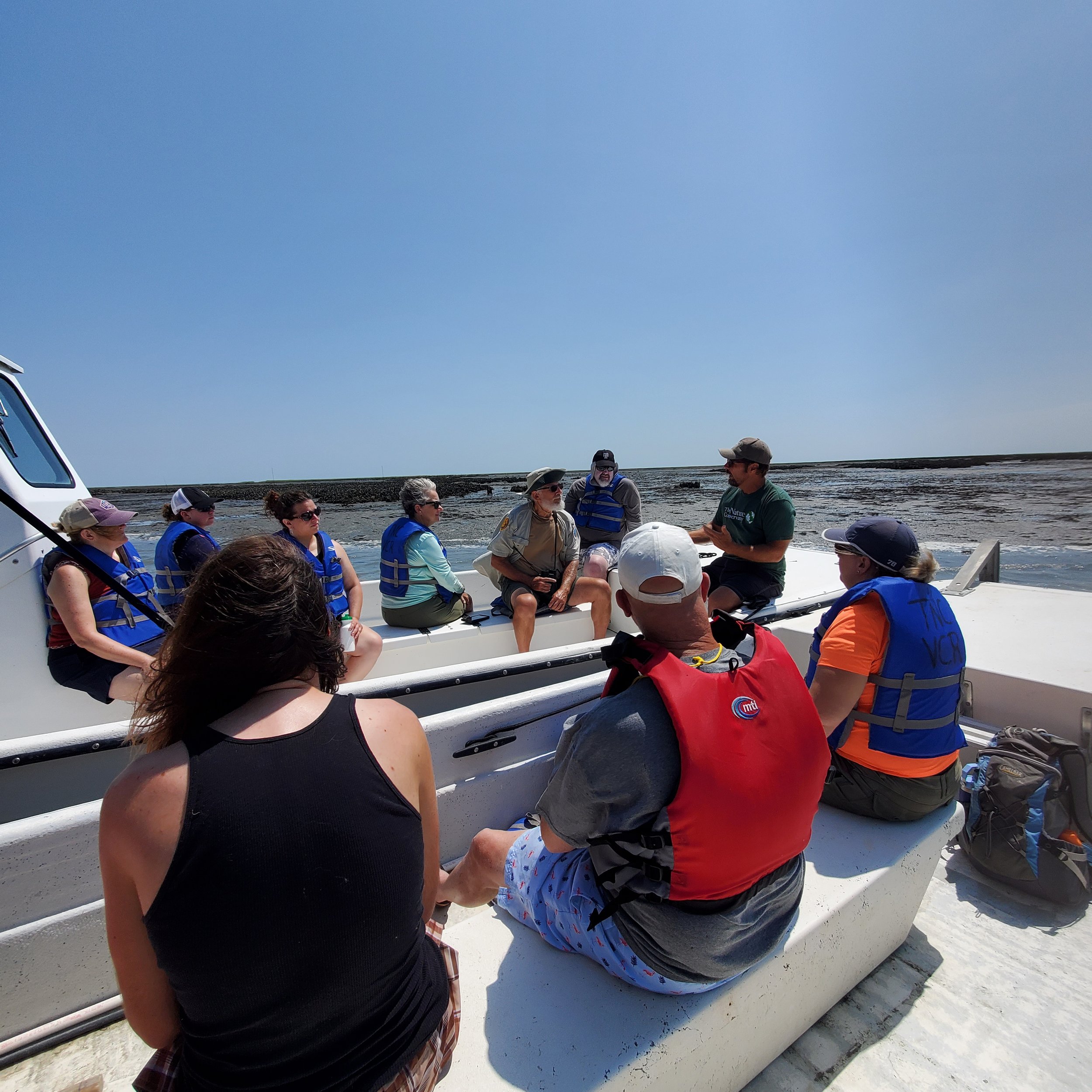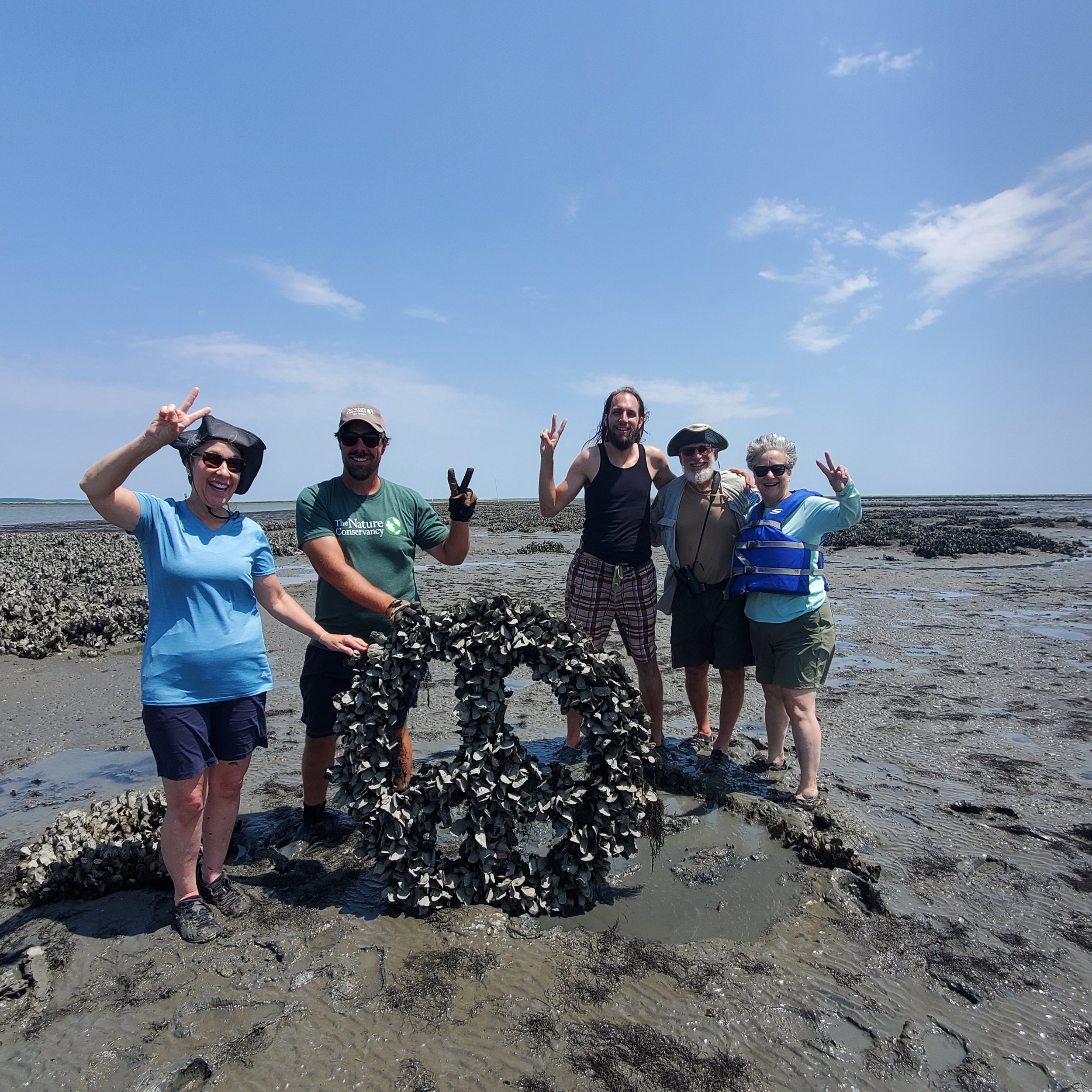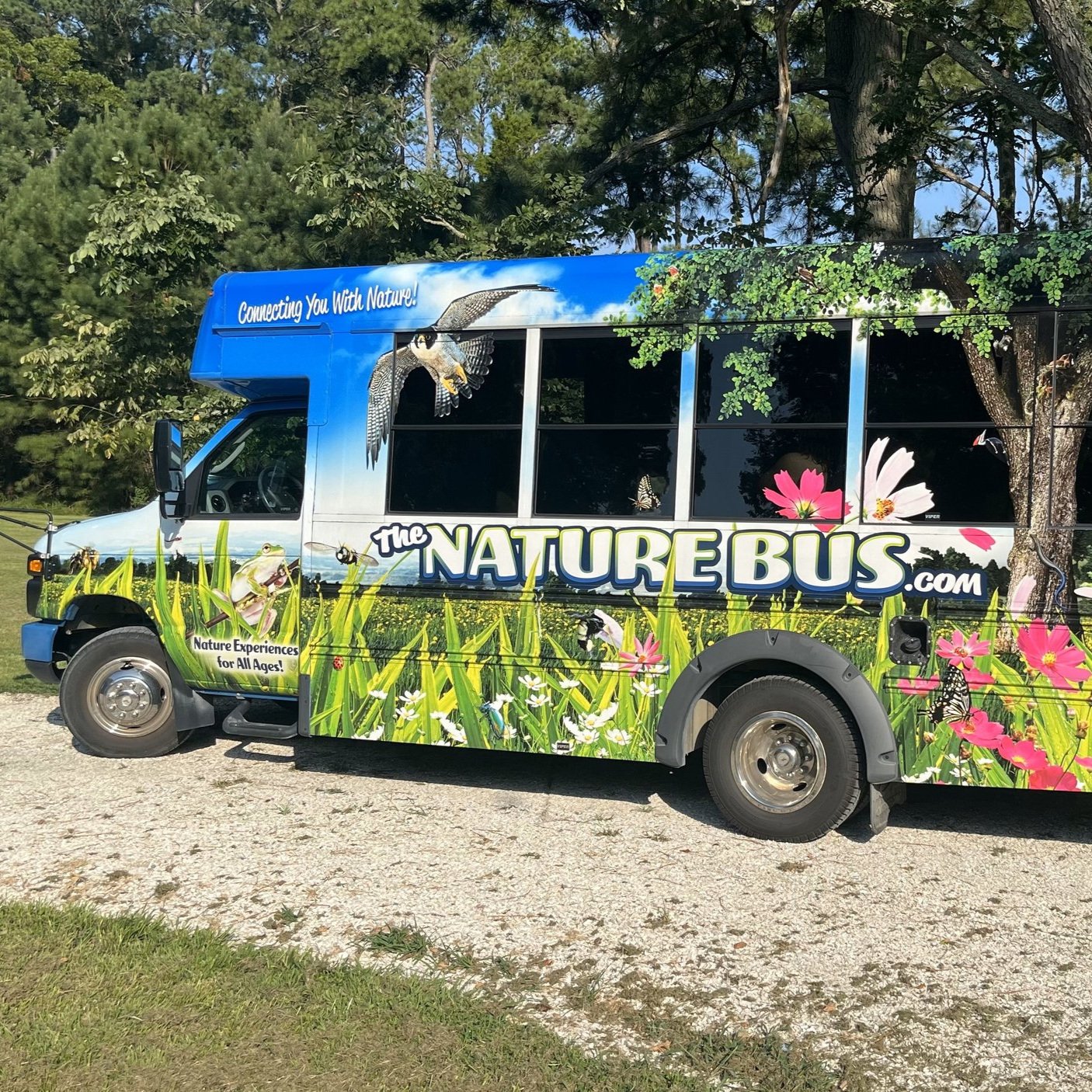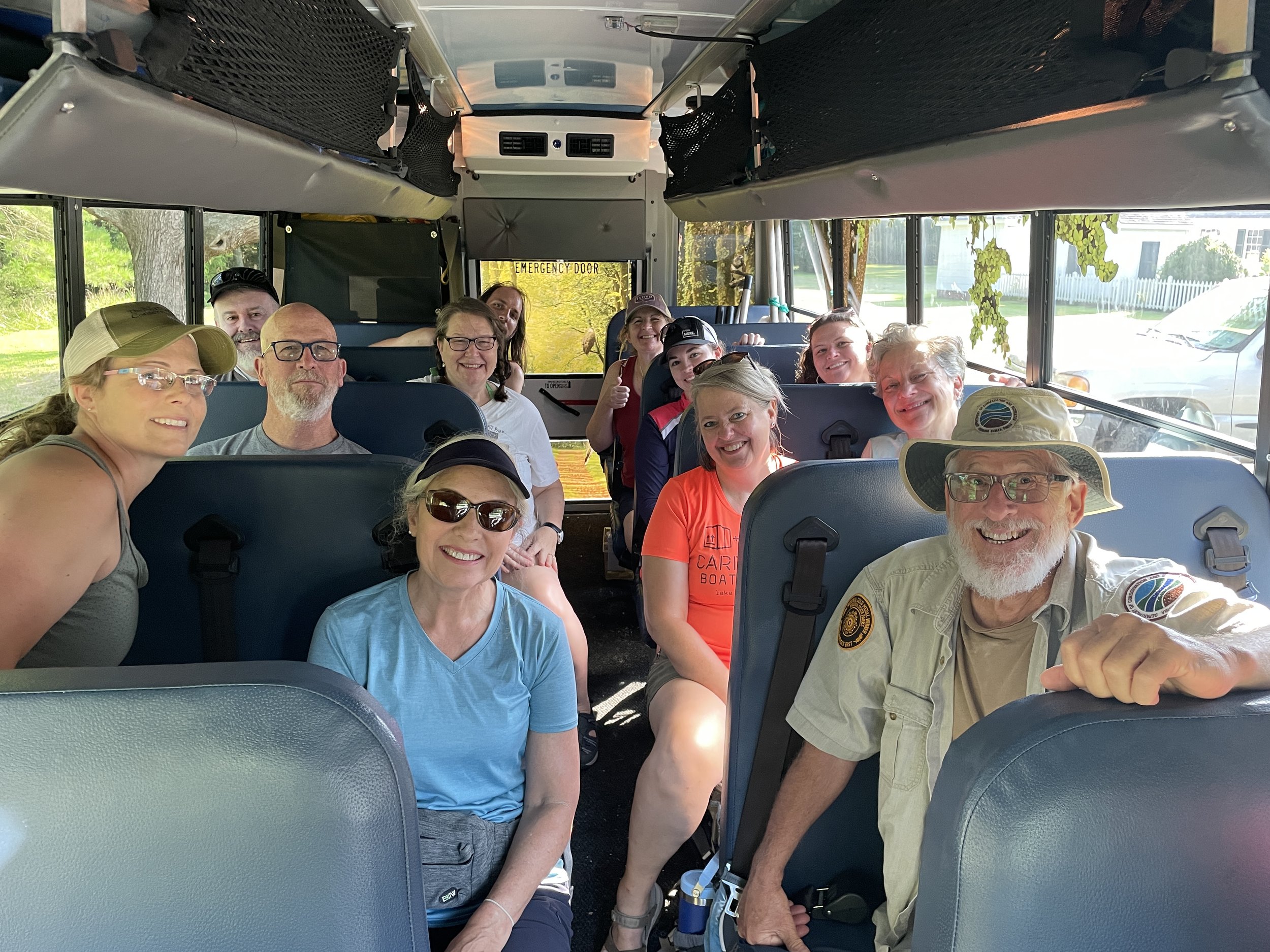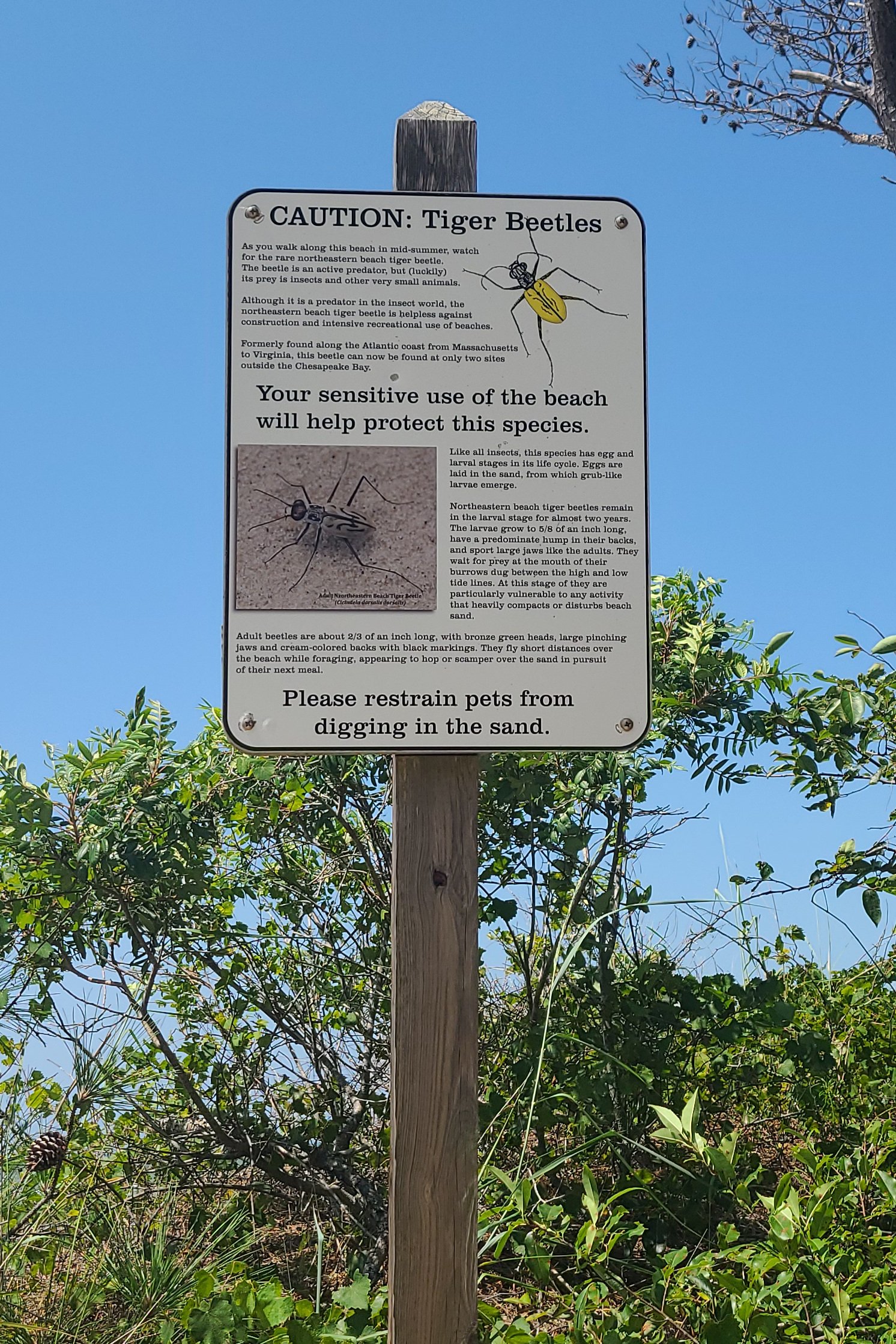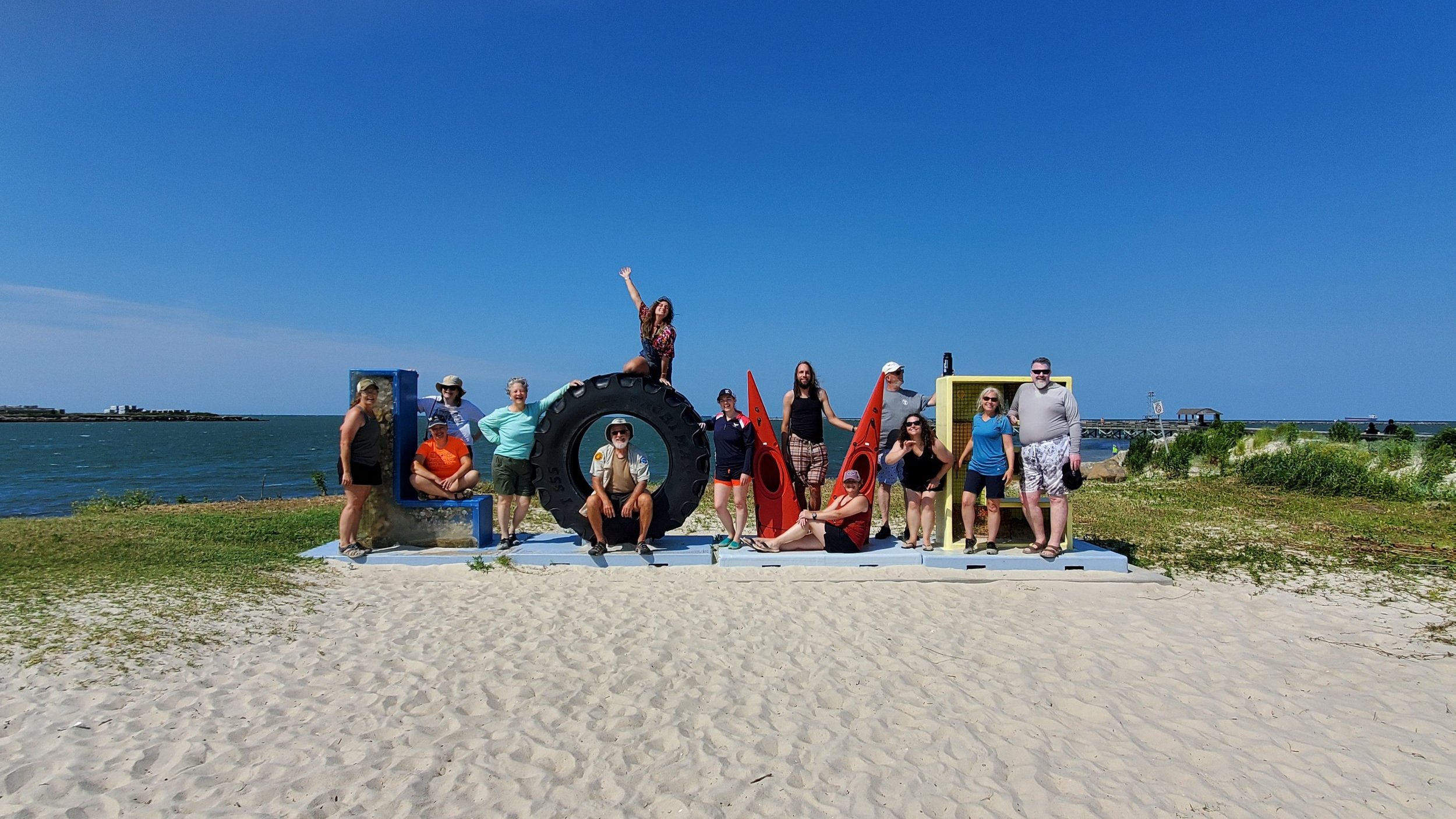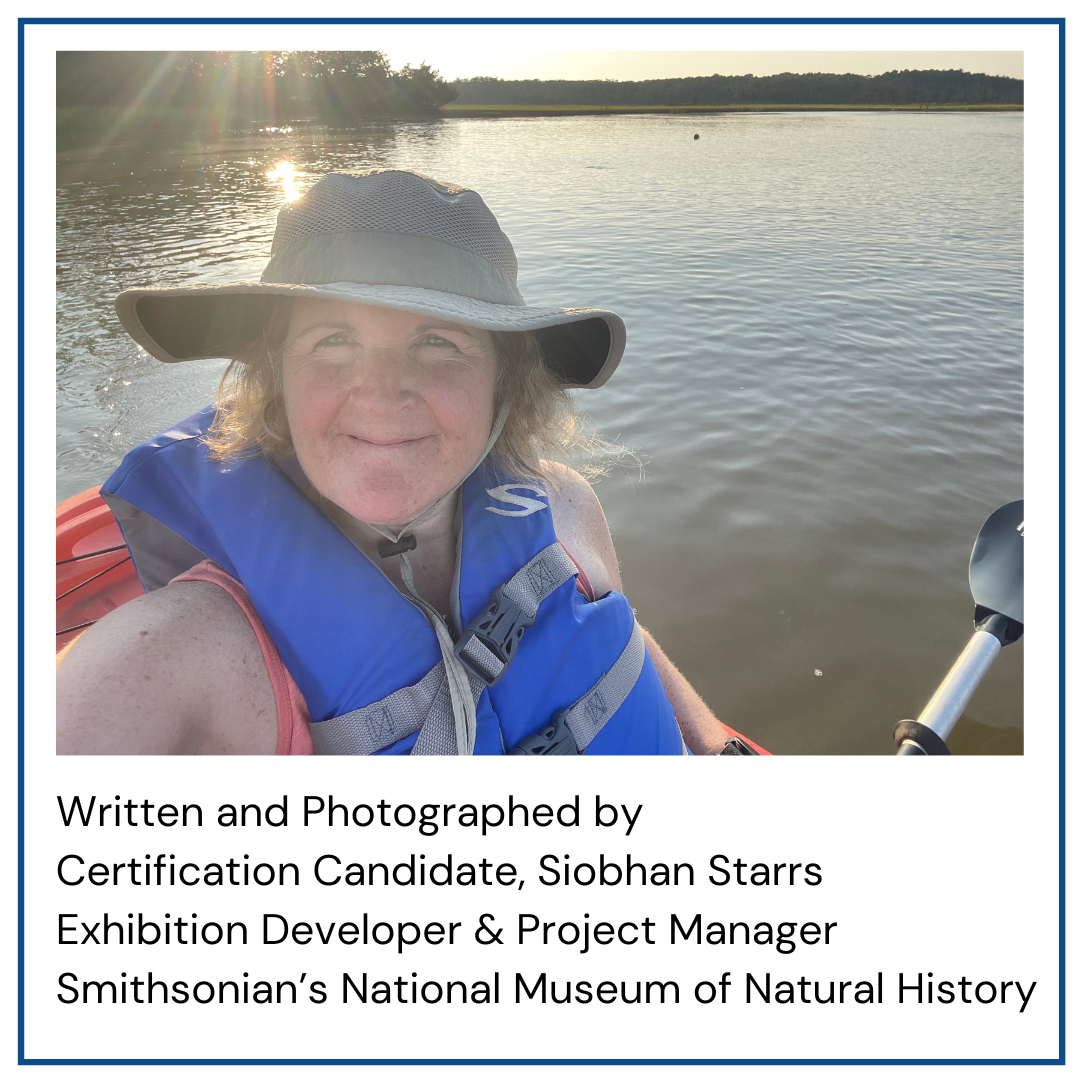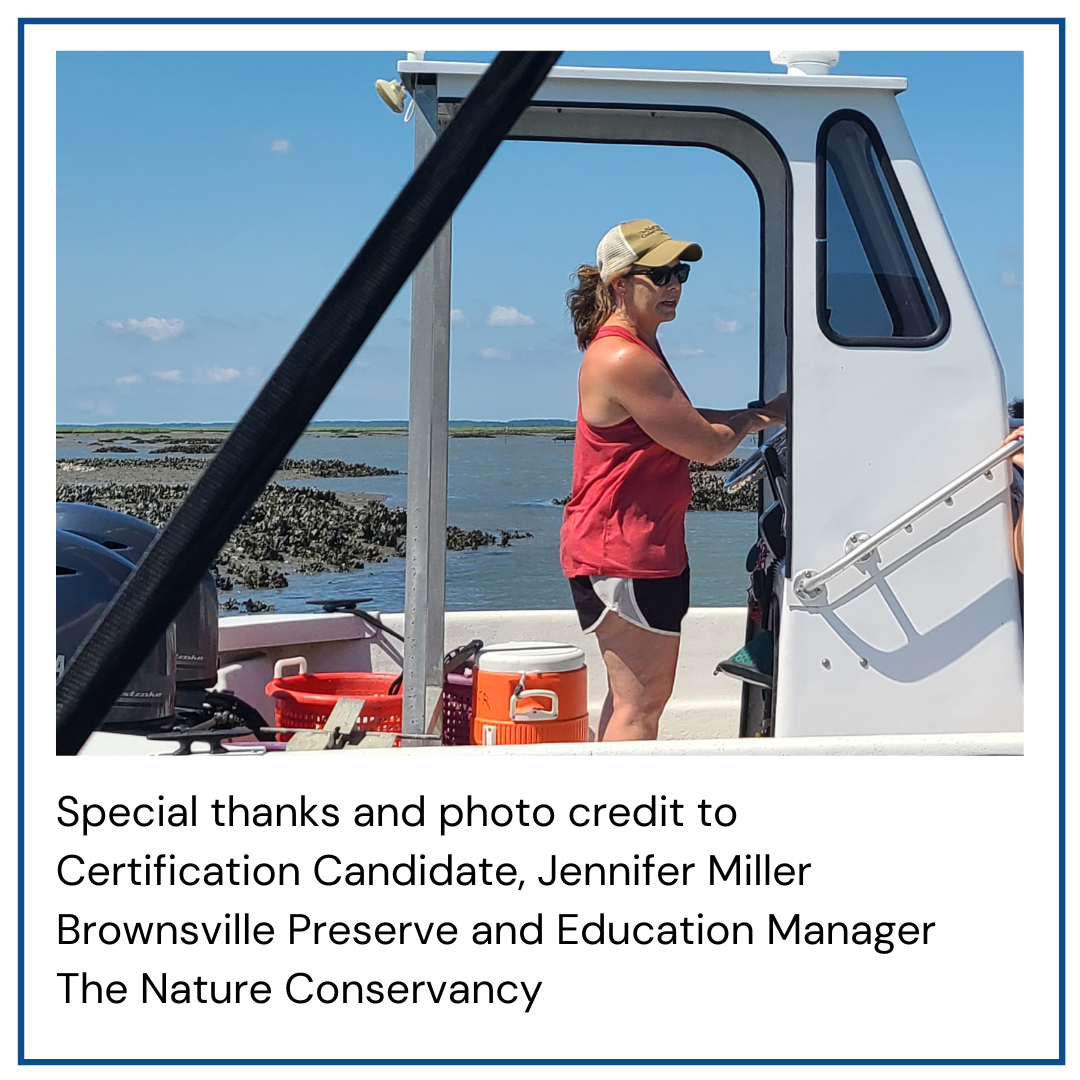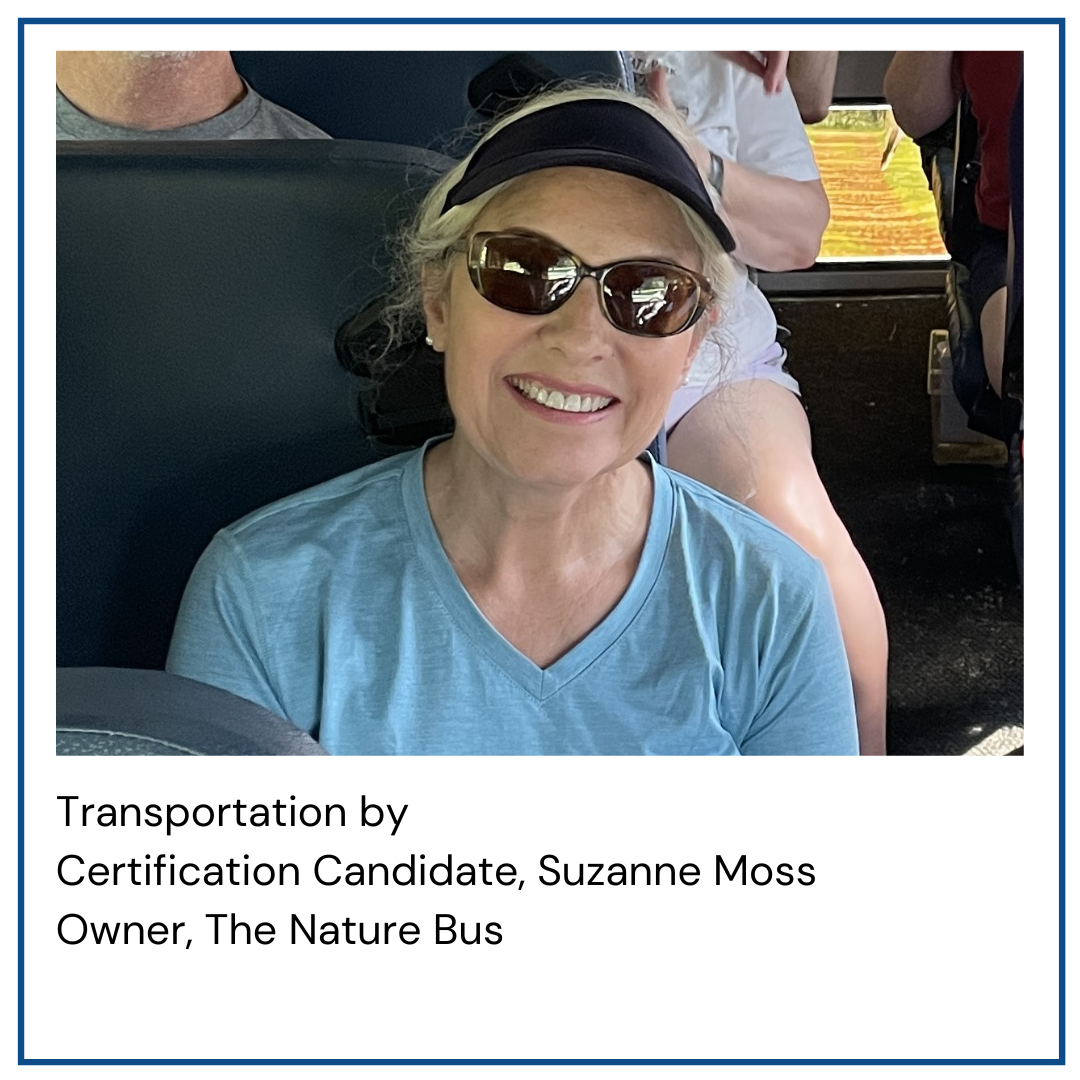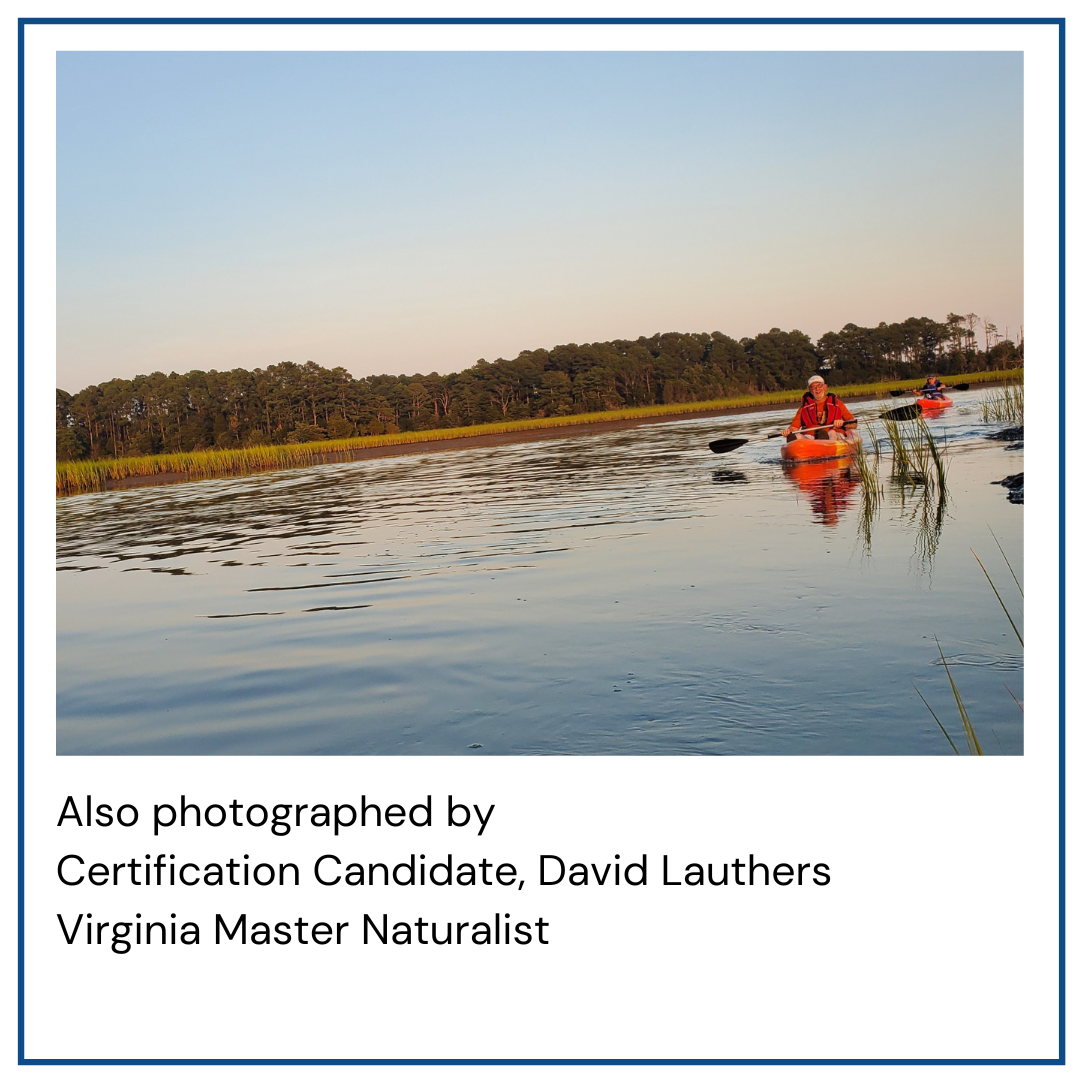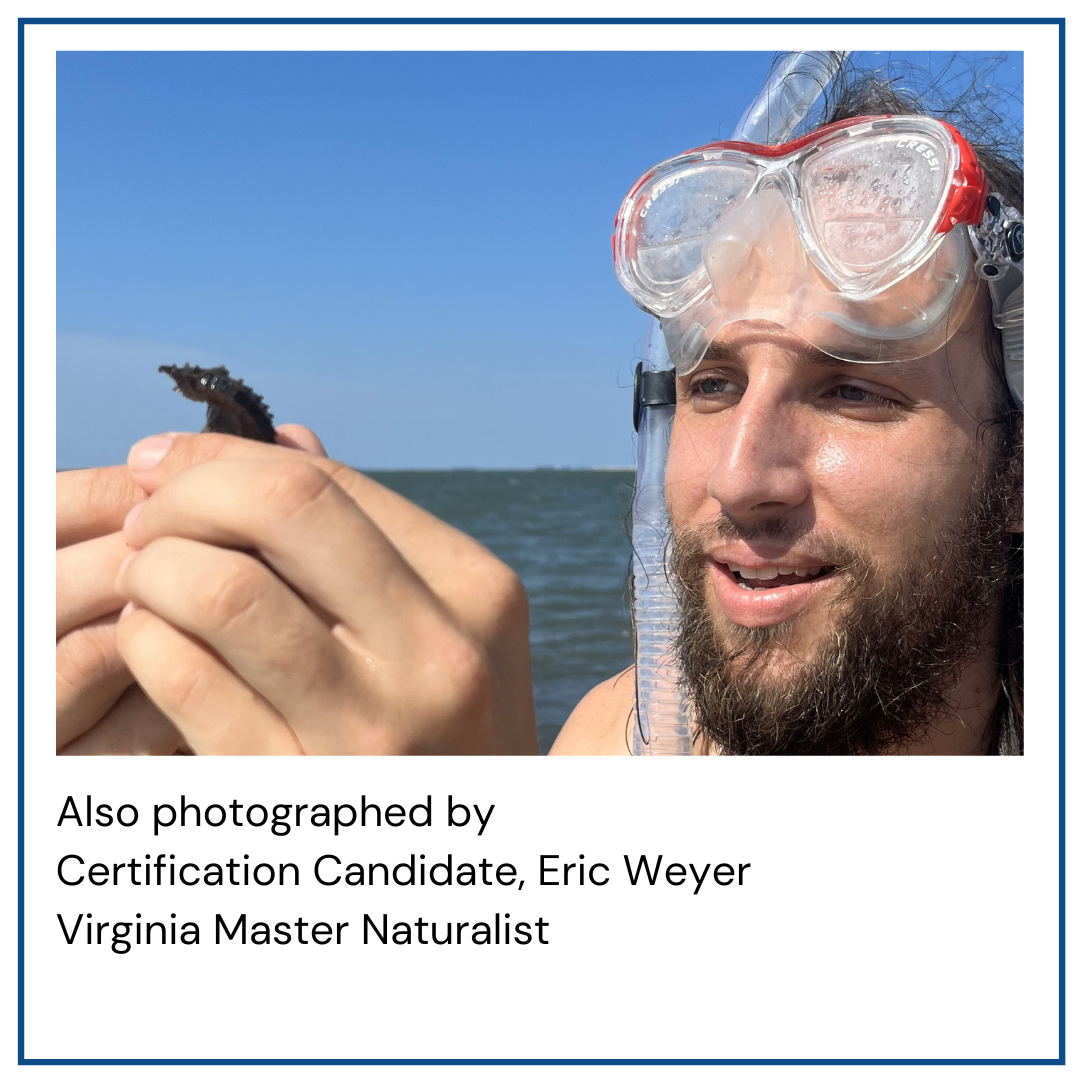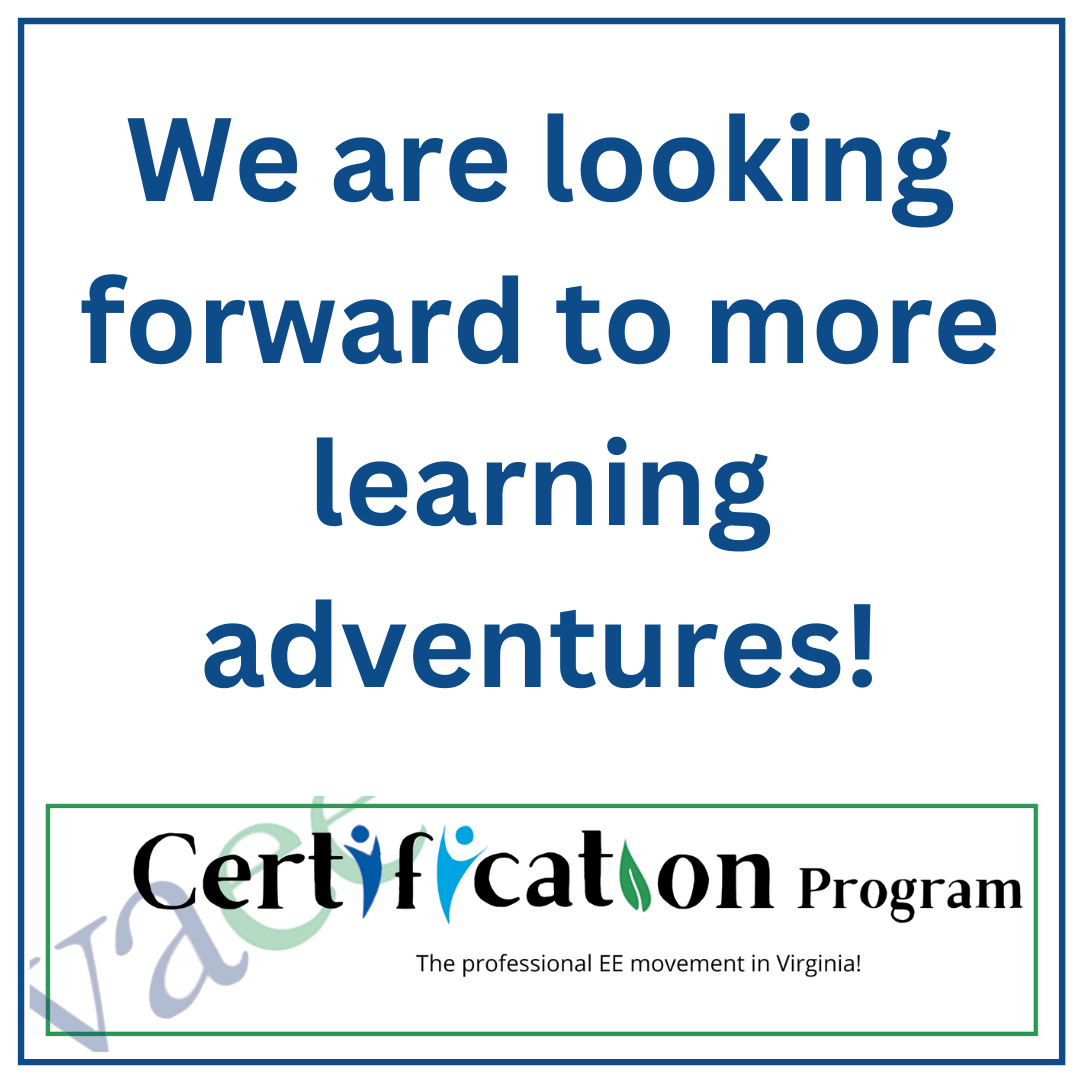Converging and Learning on Virginia’s Eastern Shore
Tara Poelzing, Editor, August 2023
Last month certification candidates gathered for a special access, sensory-filled professional learning weekend hosted by The Nature Conservancy’s Volgenau Virginia Coast Reserve.
Diversity and relationships are not just the foundation of healthy ecosystems - they are the bedrock upon which a thriving community of environmental educators can grow. When we are all scattered like pollen grains in the wind, we cherish opportunities to come together on fertile ground for the learning and camaraderie so essential to our practice as environmental educators. So when Jenny Miller, a Certification Candidate and the Preserve and Education Manager at The Nature Conservancy’s Volgenau Virginia Coast Reserve, suggested that she could pull together a professional learning weekend to help certification candidates fulfill some of their self-directed learning criteria, VAEE answered with an enthusiastic “Yes!” Over the course of three days, a gathering of educators came together on Virginia’s Eastern Shore and were reminded that land and sea, the past and the future, non-human and human nature interact in a complex web of interconnections that is at the heart of all environmental education.
As we approached our historic accommodations at Brownsville House and Volgenau Cottage, an arched cathedral of trees invited us into one of Virginia’s most diverse and complex ecoregions for the sensory-filled learning experience to come.
In this region at the intersection of land and sea, change is the only constant. The people and non-human nature here literally live at the edge–adapted to changing land, weather, tides, and seasons. As environmental educators who work outdoors, we all know that the weather has its own plans and life is about adaptation. In a place brimming with learning opportunities, alternate experiences were readily available for a quick pivot when the winds whipped up some unsafe boating conditions. Educator lesson learned: Always have a plan b, c, and d readily at hand when planning outdoor enrichments. Jenny, the TNC staff, and their partners had been watching the weather and were ready to adopt those back-up plans, so the group still found plenty of time on the water. We began with a sunset paddle on Phillips Creek, a tidal creek that forms the southern boundary of Brownsville Preserve. As the sun sloped low to meet the horizon, we learned about the native shore birds, migrating birds, changing ecosystem dynamics, and local communities all while getting to know each other a bit better.
Saturday filled our minds and souls with both long vistas and up-close experiences with tiny, wondrous creatures. On a visit to a small patch of native eelgrass right off of Cape Charles Beach on the Chesapeake Bay, our group shared a profound hands-on learning experience. Sometimes in the face of overwhelming, large-scale, existential global problems - climate change, teacher and resource shortfalls, social injustice, biodiversity loss - it can be easy to forget the impact of seemingly basic experiences like just spending time in nature, close observation practices, sensory nature experiences, exploration, or classification. None of us will soon forget the experience of wading into the water and dipping or dragging our nets through the restored eelgrass to reveal seahorses, black sea bass, a baby puffer fish, blue crabs, and so much more! John Lord, Certification Chair and current certification candidate, set the tone by catching the first seahorse of the day. Within 15 minutes, four more seahorses joined the first. Who can forget the first time a pregnant male seahorse wraps its body around your finger in a mutualistic web of support? These tangible, powerfully simple nature connection experiences are the food that nourishes all environmental education, but can get lost in the rush of our daily lives.
Later, in the town of Oyster, candidates learned about the University of Virginia’s Long Term Ecological Research (LTER) that “develops a predictive understanding of the response of coastal barrier systems to long-term environmental changes in climate, sea level and land.” At this relatively small lab facility, researchers from across Virginia and even the nation find dynamic habitats and resources to test existing hypotheses and generate new ones. We learned about the community of researchers examining the ecoregion from unique lenses that add to a more complete picture of the Eastern Shore. From mapping to dissection, from genomic sampling to climate modeling, each is a piece of the Eastern Shore puzzle and just one set of STEM careers actively conserving nature.
Our day wrapped up with a visit to TNC’s Hillcrest Oyster Sanctuary where we learned about a completely different approach to conserving habitats through oyster reef restoration. Hyperlocal expert, Bo, shared his family’s generational connection to the area’s fisheries and oyster habitats and important historic and human events that still inspire his work today. Innovations and good news flowed with eelgrass, oyster, and mussel restoration success stories. Bo invited us to make our own mark as we enjoyed a boat ride to protected oyster reefs and mudflats to install an oyster bed frame to promote new reef growth.
Throughout the weekend, thanks to transportation donated by certification candidate Suzanne Moss and The Nature Bus, her own environmental education business, our group of ten certification candidates found plenty of time to share experiences, ideas, insights, and wisdom and to enjoy time with others who are passionate about our environment and education. Just as an ecosystem is composed of diverse niches, roles, and organisms all uniquely vital to healthy functioning, we learned the importance of all our unique perspectives and skills to building a stronger community of practice.
On Sunday, our group hiked through Savage Neck Dunes Natural Area Preserve, a protected area due to the resident endangered tiger beetle population. Leaders Jenny and Zoe modeled nature walk interpretive best practices on the hike by pointing out local flora and fauna along with best techniques to find and identify important species. The dune walk took us to the bayside beach for specimen and shell hunting along with time in the warm waters. In this small secluded inlet, we caught sight of what might be one of the last tiger beetles as it scurried away from us up the sand. Hardening projects at Wallops Island miles up the coast and a rocky inlet construction project for a private home just on the southern edge of the preserve are changing the water-land dynamics in this small area. The beach is eroding, trees are falling, and the tiger beetles have nowhere to go. Understanding and communicating these downstream impacts and complex interactions is an important aspect of our work as environmental educators.
No shore weekend would be complete without birds, and our group was treated to extensive birding by boat along the barrier islands and mudflats. Our bird expert leader, Zac, offered another reminder of the diverse career pathways into environmental education and conservation work. The only common denominator seems to be a passion for our natural world and sharing that passion with others. A peregrine falcon perched atop the last remaining structure on Cobb Island - an old chimney from the hunt club long washed away by the changing landscape and rising sea level. Oystercatchers abounded, but the cohort added our sightings up to create a robust ebird list that was pretty extensive. We also learned about evolutionary marvels like the tube-nosed bird group that includes the wandering albatross named for a unique evolutionary adaptation - a nose with tubes that can filter out salt from ingested salt water that allows the birds to fly without landing for days, weeks, months, or even years. We were intrigued to learn about an important and active TNC birding project that involves placing tracer backpacks on whimbrels to follow their migration patterns. This data adds to the evolving scientific understanding of bird migration - something still clouded in more questions than answers.
Through this profound, sensory learning-filled weekend, the past and future of this place, the local people, this community of emerging environmental education leaders, and the best practices of our field were intricately woven together. Just as Bo’s local knowledge is now entwined with new oyster and reef technologies and approaches, we spoke of welcoming new topics and new perspectives in our work. Jenny shared the TNC’s new focus on local, indigenous, formerly enslaved, and immigrant communities who are often underserved and have unequal access to nature experiences and environmental education. It was an “Aha” moment to realize that in this region so defined by water, many locals do not know how to swim or have no access to the water. This was a critical reminder of the important equity and access work yet to be done. Using the power of ten analogy, we can begin to visualize the massive impact we can have by providing unique nature-based environmental learning experiences to more people of all ages who can “pass it on” and share their new environmental experiences in ever-widening circles of impact. Lesson learned: We can and do make a difference to individuals and the world.
Edited by: Tara Poelzing, Certification Administrator
August 24, 2023

